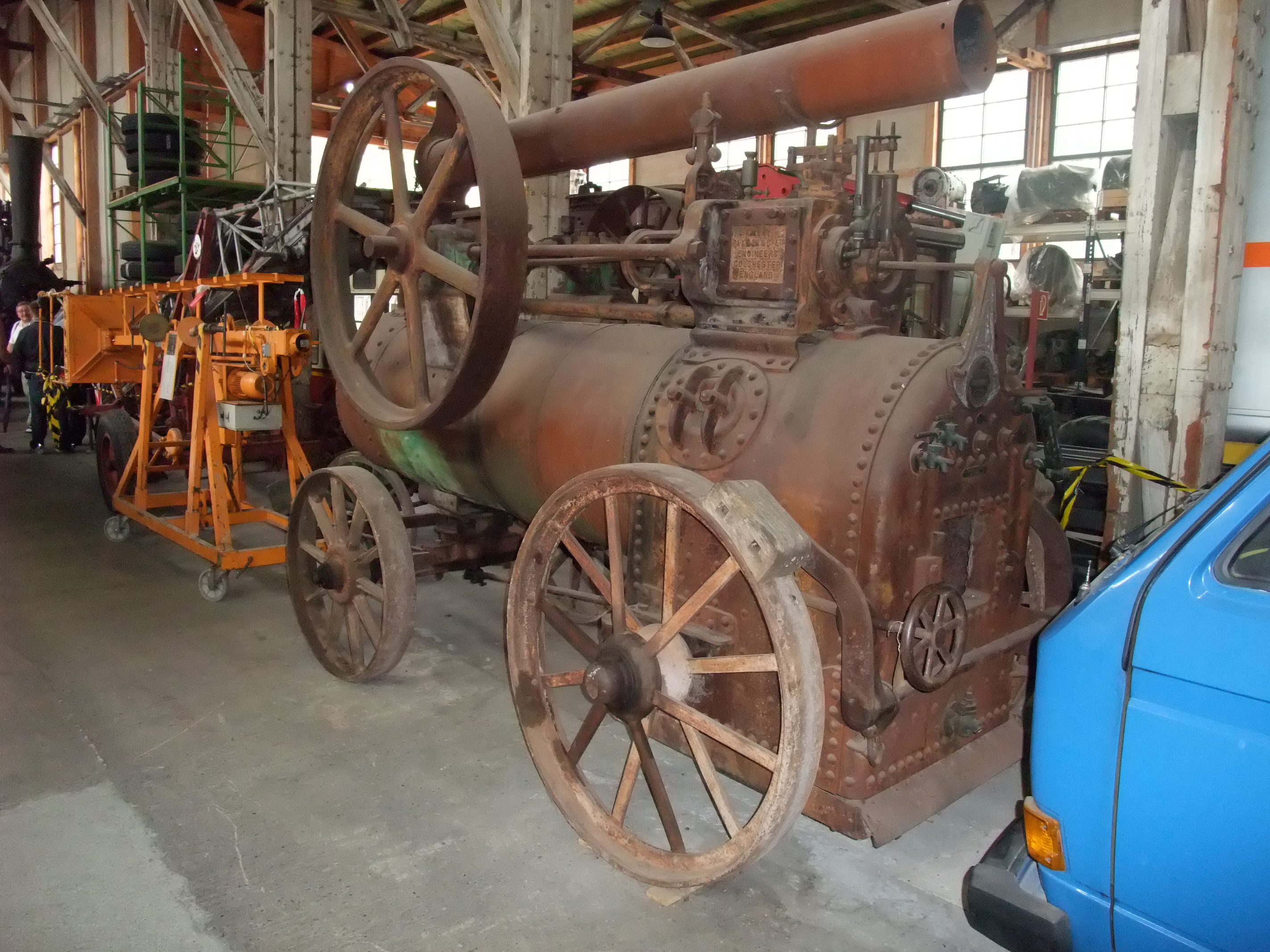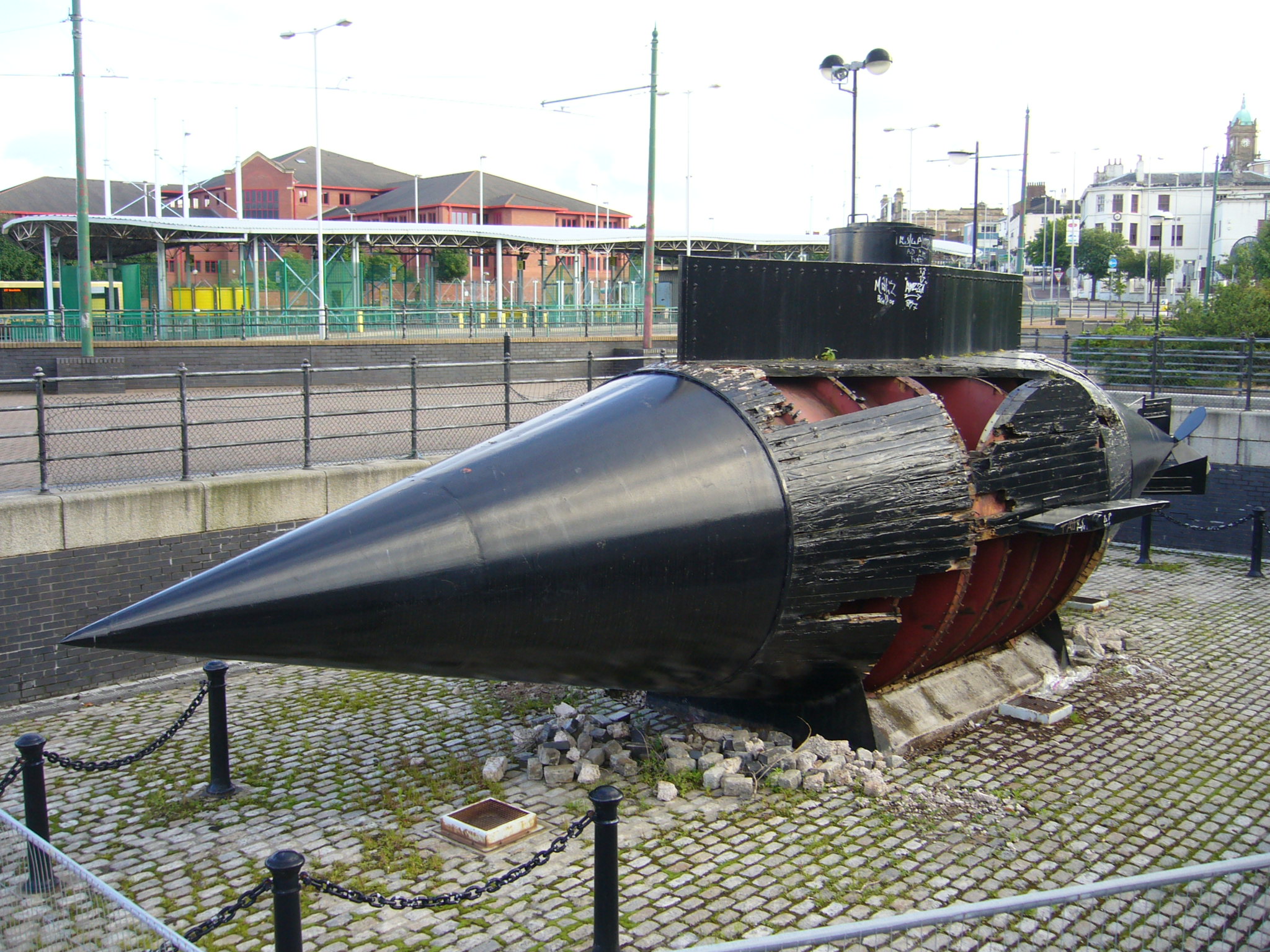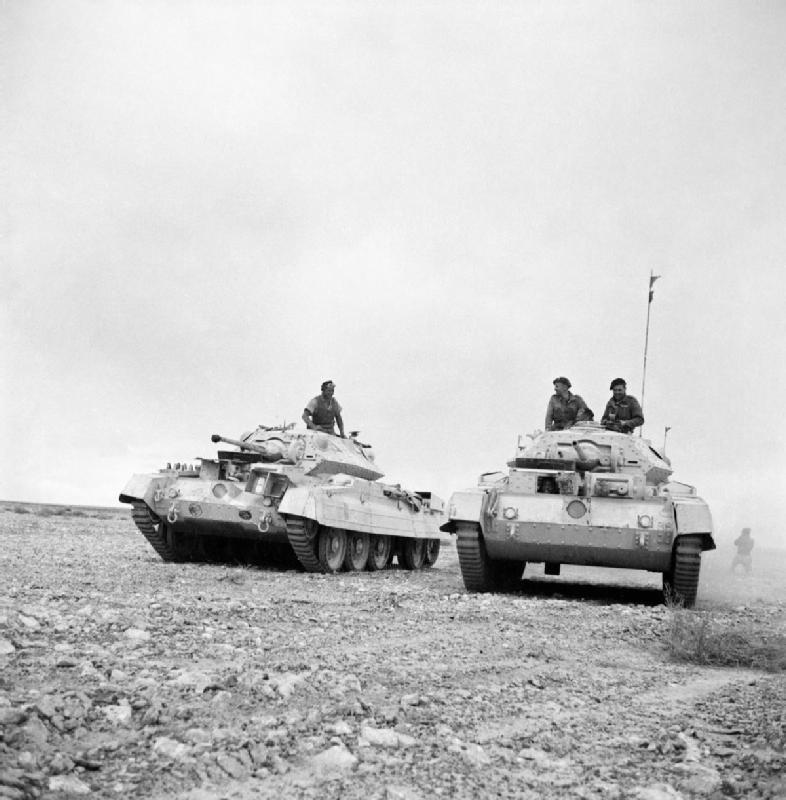|
LCT 7074
HM LCT 7074 is the last surviving Landing Craft, Tank (LCT) in the UK. LCT 7074 is an amphibious assault ship for landing tanks, other vehicles and troops on beachheads. Built in 1944 by Hawthorn Leslie and Company, Hebburn, the Mark 3 LCT 7074 was part of the 17th LCT Flotilla during Operation Neptune in June 1944. LCT 7074 was decommissioned in 1947, and used by the Master Mariners' Club of Liverpool as their club ship ''Landfall''. She served as a floating nightclub in the 60s and 70s and was acquired by the Warship Preservation Trust in the late 1990s. She was moored at Birkenhead for restoration but the Trust went into liquidation and she later sank in the dock. The vessel was raised by the National Museum of the Royal Navy in October 2014 and transported by sea to Portsmouth for restoration. Design LCT 7074 was one of 235 Mark III LCTs; the Mark III was an extended version of the Mark II design. The vessel was built by Hawthorn Leslie at Hebburn and was powered by two ... [...More Info...] [...Related Items...] OR: [Wikipedia] [Google] [Baidu] |
Hawthorn Leslie And Company
R. & W. Hawthorn, Leslie and Company, Limited, usually referred to as Hawthorn Leslie, was a shipbuilder and locomotive manufacturer. The company was founded on Tyneside in 1886 and ceased building ships in 1982. History The company was formed by the merger of the shipbuilder A. Leslie and Company in Hebburn with the locomotive works of R and W Hawthorn at St. Peter's in Newcastle upon Tyne in 1886. The company displaced its locomotive manufacturing interests in 1937 to Robert Stephenson and Company, which became ''Robert Stephenson and Hawthorns Ltd.'' Perhaps the most famous ship built by the Company was HMS ''Kelly'', launched in 1938 and commanded by Lord Louis Mountbatten. In 1954, the shipbuilding and marine engine activities were put into separate subsidiaries, Hawthorn Leslie (Shipbuilders) Ltd. and Hawthorn Leslie (Engineers) Ltd. In 1968 the Company's shipbuilding interests were merged with that of Swan Hunter and the Vickers Naval Yard to create Swan Hunter & Tyne ... [...More Info...] [...Related Items...] OR: [Wikipedia] [Google] [Baidu] |
Paxman (engines)
Paxman is a major British brand of diesel engines. Ownership has changed on a number of occasions since the company's formation in 1865, and now the brand is part of MAN Diesel & Turbo. At its peak, the Paxman works covered and employed over 2,000 people. Early Paxman diesel engines (with "Comet" indirect injection cylinder heads, designed by Sir Harry Ricardo) carried the name Paxman Ricardo. History Davey Paxman Paxman was founded by James Noah Paxman, Henry and Charles Davey as Davey, Paxman & Davey, Engineers in 1865, later Davey, Paxman & Co. which became a limited company in 1898. In 1920 the company became a member of the Agricultural & General Engineers (AGE) combine. In 1932 AGE collapsed and Paxman emerged as Davey Paxman & Co (Colchester) Ltd. Davey, Paxman and Davey conducted business as general engineers and ironworkers. The company manufactured steam engines, boilers, agricultural machinery, and mill gearing. By the early 1870s the company was supplying mach ... [...More Info...] [...Related Items...] OR: [Wikipedia] [Google] [Baidu] |
Great Float
The Great Float is a body of water on the Wirral Peninsula, England, formed from the natural tidal inlet, the Wallasey Pool. It is split into two large docks, East Float and West Float, both part of the Birkenhead Docks complex. The docks run approximately inland from the River Mersey, dividing the towns of Birkenhead and Wallasey. The Great Float consists of of water and more than of quays. History Unlike in Liverpool, where the docks were built along the coastline of the River Mersey, Birkenhead Docks were designed as an inland system by enclosing the tidal inlet of Wallasey Pool. The construction of a cofferdam enabled land reclamation and excavations to take place. After the establishment of the Great Low Water Basin, Morpeth Dock and Egerton Dock, the Great Float was formed between 1851 and 1860 from most of what remained of Wallasey Pool. The plans for its construction were originally shown in 1844 in the ''Liverpool Standard'' newspaper. Designed by James Meadows ... [...More Info...] [...Related Items...] OR: [Wikipedia] [Google] [Baidu] |
Sherman On LCT 7074
Sherman most commonly refers to: *Sherman (name), a surname and given name (and list of persons with the name) ** William Tecumseh Sherman (1820–1891), American Civil War General *M4 Sherman, a tank Sherman may also refer to: Places United States * Sherman Island (California) * Mount Sherman, Colorado * Sherman, Connecticut, a New England town ** Sherman (CDP), Connecticut, the central village in the town * Sherman, Illinois, a village * Sherman, Kansas * Sherman, Kentucky * Sherman, Maine, a town * Sherman, Michigan, an unincorporated community * Sherman, Minnesota, an unincorporated community * Sherman, Mississippi, a town * Sherman, Missouri, an unincorporated community * Sherman, New Mexico, an unincorporated community * Sherman (town), New York ** Sherman (village), New York * Sherman, South Dakota, a town * Sherman, Texas, a city * Sherman, Washington, a ghost town * Sherman, West Virginia, an unincorporated community * Sherman, Clark County, Wisconsin, a town * Sherman ... [...More Info...] [...Related Items...] OR: [Wikipedia] [Google] [Baidu] |
Far East
The ''Far East'' was a European term to refer to the geographical regions that includes East and Southeast Asia as well as the Russian Far East to a lesser extent. South Asia is sometimes also included for economic and cultural reasons. The term first came into use in European geopolitical discourse in the 15th century, particularly the British, denoting the Far East as the "farthest" of the three "Easts", beyond the Near East and the Middle East. Likewise, during the Qing dynasty of the 19th and early 20th centuries, the term "Far West (Taixi), Tàixī ()" – i.e., anything further west than the Arab world – was used to refer to the Western countries. Since the mid-20th century, the term has mostly gone out of use for the region in international mass media outlets due to its eurocentric connotations.Reischauer, Edwin and John K Fairbank, ''East Asia: The Great Tradition,'' 1960. The Russian Far East is often excluded due to cultural and ethnic differences, and is often cons ... [...More Info...] [...Related Items...] OR: [Wikipedia] [Google] [Baidu] |
Gold Beach
Gold, commonly known as Gold Beach, was the code name for one of the five areas of the Allied invasion of German-occupied France in the Normandy landings on 6 June 1944, during the Second World War. Gold, the central of the five areas, was located between Port-en-Bessin on the west and the Lieu-dit La Rivière in Ver-sur-Mer on the east. High cliffs at the western end of the zone meant that the landings took place on the flat section between Le Hamel and La Rivière, in the sectors code-named Jig and King. Taking Gold was to be the responsibility of the British Army, with sea transport, mine sweeping, and a naval bombardment force provided by the Royal Navy as well as elements from the Dutch, Polish and other Allied navies. The objectives at Gold were to secure a beachhead, move west to capture Arromanches and establish contact with the American forces at Omaha, capture Bayeux and the small port at Port-en-Bessin, and to link up with the Canadian forces at Juno to the eas ... [...More Info...] [...Related Items...] OR: [Wikipedia] [Google] [Baidu] |
22nd Armoured Brigade (United Kingdom)
The 22nd Armoured Brigade was an armoured brigade of the British Army that saw service during and after the Second World War. The brigade was formed on the outbreak of war on 3 September 1939 from Territorial Army (TA) armoured regiments. It saw a considerable amount of action during the war, beginning with the Western Desert Campaign where it was engaged in Operation Crusader and at the Battles of Gazala, Mersa Matruh, First Alamein and Alam el Halfa. It then joined the 7th Armoured Division (the 'Desert Rats') for the Second Battle of El Alamein. It remained part of 7th Armoured for the rest of the war, including the campaigns in Tunisia, Italy and North West Europe. It continued in the postwar TA until 1956. The brigade's identity was re-established in the Regular Army between 1981 and 1993. Mobilisation 22nd Heavy Armoured Brigade (the 'Heavy' was dropped on 14 April 1940) was formed at the outbreak of the Second World War on 3 September 1939 with the mobilisation o ... [...More Info...] [...Related Items...] OR: [Wikipedia] [Google] [Baidu] |
5th Royal Tank Regiment
5th Royal Tank Regiment (5 RTR) was an armoured regiment of the British Army in existence for 52 years, from 1917 until 1969. It was part of the Royal Tank Regiment, itself part of the Royal Armoured Corps. It originally saw action as E Battalion, Tank Corps in 1917. At the Battle of Cambrai in late 1917, during the First World War, the squadron of tanks led by Arthur George Griffiths made a huge impact on the battle. The commanding general asked for the squadron of tanks to be doubled in size, and so Griffiths's squadron evolved into the 5th Tank Regiment. The regiment saw wide-ranging service in the Second World War, and fought in nearly all of the major allied campaigns from the 1940 retreat from France through the Western Desert Campaign, Normandy and on into Germany. It became part of the 22nd Armoured Brigade, of the 7th Armoured Division. In December 1946, the regiment was the first to use Centurion tanks in regular service. In 1960, under the command of Hugo Iron ... [...More Info...] [...Related Items...] OR: [Wikipedia] [Google] [Baidu] |
M3 Stuart
The M3 Stuart/Light Tank M3, was an American light tank of World War II. An improved version of the tank entered service as the M5 in 1942 to be supplied to British and other Commonwealth forces under lend-lease prior to the entry of the U.S. into the war. Afterwards, it was used by U.S. and Allied forces until the end of the war. The British service name "Stuart" came from the American Civil War Confederate general J. E. B. Stuart and was used for both the M3 and the derivative M5 Light Tank. Unofficially, were also often called "Honeys" by the British, because of their smooth ride. In U.S. use, the tanks were officially known as "Light Tank M3" and "Light Tank M5". Stuarts were first used in combat in the North African campaign; about 170 were used by the British forces in Operation Crusader (18 November – 30 December 1941). Stuarts were the first American-crewed tanks in World War II to engage the enemy in tank versus tank combat when used in the Philippines in Decemb ... [...More Info...] [...Related Items...] OR: [Wikipedia] [Google] [Baidu] |
Sherman Tank
} The M4 Sherman, officially Medium Tank, M4, was the most widely used medium tank by the United States and Western Allies in World War II. The M4 Sherman proved to be reliable, relatively cheap to produce, and available in great numbers. It was also the basis of several other armored fighting vehicles including self-propelled artillery, tank destroyers, and armored recovery vehicles. Tens of thousands were distributed through the Lend-Lease program to the British Commonwealth and Soviet Union. The tank was named by the British after the American Civil War General William Tecumseh Sherman. The M4 Sherman evolved from the M3 Medium Tank, which for speed of development had its main armament in a side sponson mount. The M4 retained much of the previous mechanical design, but moved the main 75 mm gun into a fully traversing central turret. One feature, a one-axis gyrostabilizer, was not precise enough to allow firing when moving but did help keep the gun aimed in roughly th ... [...More Info...] [...Related Items...] OR: [Wikipedia] [Google] [Baidu] |
Cromwell Tank
The Cromwell tank, officially Tank, Cruiser, Mk VIII, Cromwell (A27M), was one of the series of cruiser tanks fielded by Britain in the Second World War. Named after the English Civil War-era military leader Oliver Cromwell, the Cromwell was the first tank put into service by the British to combine high speed from a powerful, reliable engine (the Rolls-Royce Meteor) and reasonable vehicle armour, armour. The intended dual-purpose high velocity gun could not be fitted in the turret, so a medium velocity dual purpose gun was fitted instead. Further development of the Cromwell combined with a high velocity gun led to the Comet tank. The name "Cromwell" was initially applied to three vehicles during development. Early Cromwell development led to the creation of the Cavalier tank, A24 Cavalier. Later Cromwell development led to the creation of the competing Tank, Cruiser, Mk VIII, Centaur (A27L) design. The Centaur tank was closely related to the Cromwell, both vehicles being externa ... [...More Info...] [...Related Items...] OR: [Wikipedia] [Google] [Baidu] |
Felixstowe
Felixstowe ( ) is a port town in Suffolk, England. The estimated population in 2017 was 24,521. The Port of Felixstowe is the largest container port in the United Kingdom. Felixstowe is approximately 116km (72 miles) northeast of London. History The town is named after Felix of Burgundy, a saint and the first bishop of the East Angles in the seventh century. The old Felixstowe hamlet was centred on a pub and church, having stood on the site since long before the Norman conquest of England. The early history of Felixstowe, including its Roman, Anglo-Saxon, Norman and medieval defences, is told under the name of Walton, because the name Felixstowe was given retrospectively, during the 13th century, to a place which had expanded to a form beyond the boundaries of Walton alone. In the Doomsday book, for instance, only Walton is shown, and not Felixstowe, which at the time held little more than a few houses scattered over the cliff tops. Walton was a settlement on the River Orwell ... [...More Info...] [...Related Items...] OR: [Wikipedia] [Google] [Baidu] |









.jpg)